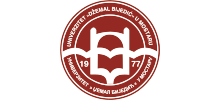
Dzemal Bijedic University of Mostar (UNMO): Dzemal Bijedic University of Mostar was founded in 1977 as one of the pillars of the development of the Herzegovina region. Today University consists of eight faculties in the fields of Humanities, Social Sciences, Technical Sciences, IT, and Biotechnology. Study programs are organized according to the Bologna principles. Students come mostly from Herzegovina and mid-Bosnia, but also from the rest of the country. Additional University capacities include research institutes and centres, and offices for student support. Apart from close cooperation with seven other public Universities of B&H, good cooperation with local entrepreneurship, and membership in B&H Rector Conference, UNMO has signed bilateral and multilateral Cooperation Agreements with relevant EU universities. Together with its partners, utilizing teachers and students potential, the University is implementing a number of projects, funded from different programs and aiming a wide scope of goals, from scientific to almost completely socially oriented.
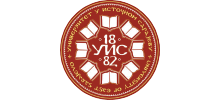
University of East Sarajevo (UES): The University of East Sarajevo is an independent and self-governing public institution, consisting of the 15 faculties and the two academies. Strategic objectives are the raising the quality level of study, followed by participation in international scientific research projects, as well as other types of projects in the field of higher education, folding bilateral general and specific agreements with universities in the country and the world, the mobility of students and staff development activities related to international educational projects, and membership in international networks and institutions/organizations. The University of East Sarajevo has participated in 50 TEMPUS projects since 2000, and a lot of other education, scientific and development projects within certain programmes financed by EU, such as: FP6 programme; Erasmus plus, IPA program. University staff is involved in a lot of other project at national, regional and international levels.
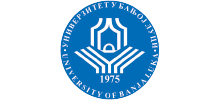
University of Banja Luka (UBL): The University of Banja Luka (UBL), established in 1975, is the second largest in BiH, with more than 18,500 students. It consists of 16 faculties. UBL has 63 licensed study programs at the I cycle, 66 at the II and 8 at the III and is fully commuted to the idea of a borderless area for research and knowledge exchange in Europe. Besides of an excellent location and own facilities, UBL has other competitive capabilities, including about 1,000 research active staff for teaching and research excellence and 450 administrative staff members.
The Banja Luka University staff has been involved in 89 Tempus projects, several FP6 projects and FP7 projects, as well as in Erasmus Mundus projects. Also, UBL is involved in 4 Erasmus+ capacity building projects and 10 Erasmus+ credit mobility projects.The other international projects were financed by: the European Commission, the Council of Europe, United Nations, the World Bank, governments of several states.
The University of Banja Luka is bound by more than 200 bilateral agreements on cooperation with public and private universities from all over the world.
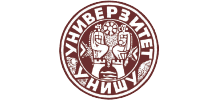
University of Nis (UNI): The University of Niš was founded in 1965 as a state HE institution. At present, the University comprises 13 faculties. The University of Niš currently has 28207 students at all levels of studies, 1639 teaching staff and 740 administrative and support staff. Within the EM ECW program, the University of Niš entered the exchange of students and teaching staff in 2008 as a partner in the Project BASILEUS. In 2011 University of Niš became a consortium member of the Project EM2STEM. University of Niš also became partner of other Erasmus Mundus programmes, such as SIGMA, ERAWEB, EUROWEB. Currently, the University is involved in the following programs: ERASMUS+, SIGMA Agile, EUROWEB+, ERAWEB and GREEN-TECH. One of the leading principles of the University of Niš is to become part of the European higher education area and to adjust its plans and programs against this aim, in the context of the reform of higher education system within the EU Projects and other programs. In spite of the results that UNI has so far achieved regarding international projects implementation, further enhancement of research capacities and services still remains a task of utmost importance for giving proper support to researchers in their work and establishing a firm position in the European research area. UNI recognizes the need for creation of adequate institutional framework, as well as for appropriate trainings at European partner universities aimed at improving skills of both researchers and administrative staff, as an indispensable means toward creating a research friendly environment for its researchers.
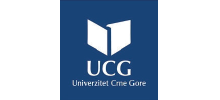
University of Montenegro (UoM): The University of Montenegro (UOM) was established in 1974. It is the oldest, the largest and the leading educational and research institution in Montenegro with 19 faculties, 3 associated research institutes and 73 study programs, of which, more than 58 are academic and 15 applied study programmes. UOM has its seat in Podgorica, the capital of Montenegro with approximately 200,000 inhabitants. The faculties and institutes of the University are located in five towns: Podgorica, Niksic, Cetinje, Kotor and Herceg Novi, but most faculties of the University of Montenegro are located in Podgorica. UOM currently employs 1073 staff, out of which around 300 professors and 300 research assistants. Academic titles are: full professor, associate professor and assistant professor. Academic staff is appointed by the Senate based on public competition for the period of five years, except for full professors, appointed on permanent bases.

Sarajevo Meeting of Cultures (SMOC): Sarajevo Meeting of Cultures (SMOC) is a non-governmental, non-for-profit organization founded in 2012 with an aim to promote the diverse culture and rich Cultural Heritage of Bosnia and Herzegovina within and beyond its borders. By promoting the city of Sarajevo and Bosnia and Herzegovina as a place where tolerance, peace and coexistence of different cultures meet, SMOC also engages in activities that put effort into promoting the country as a place of multiculturalism and openness. SMOC cooperates with the civil society and institutions at all levels who share alike perspectives in strengthening the socio-economic and cultural tourism development of B&H. Sarajevo Meeting of Cultures is also focused on educational programs for the youth addressing the importance of reducing the social, cultural, economic and geographical gaps that make equal access difficult for all. Through its work, SMOC cultivates the idea of volunteerism of students from Bosnia and Herzegovina and engages them in project implementation activities. The organization’s staff members and Executive Board members have ample experience in implementing TEMPUS and ERASMUS+ projects pertinent to Higher Education development. The organization closely cooperates with the Higher education sector.

THE PROVINCIAL INSTITUTE FOR THE PROTECTION OF CULTURAL MONUMENTS (PZZZSK): Officially founded in 1951, The Provincial Institute is now part of a network of such institutes in the Republic of Serbia and the central institution for the protection of immovable cultural heritage on the territory of AP Vojvodina. Through research and evaluation of cultural heritage the experts of the Institute reveal the cultural values of the people in Vojvodina, and the need to preserve such values, national identity and diversity as part of European values. The Institute has completed many projects of conservation, restoration and reconstruction of cultural heritage, in Vojvodina, Montenegro, Bosnia and Herzegovina, Croatia, Hungary, Romania, Egypt and Greece. It has about 50 employees, of which 35 are conservators. The Institute is organizationally divided into four sectors: administrative, research, technical and conservation-restoration, including architectural and painting studio, and gilding-carving workshop.
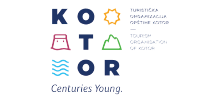
Tourism Organisation of Kotor Municipality (TO Kotor): Kotor tourism organisation is located in one of the most charming and historical touristic sites of Montenegro- medieval town of Kotor, which is due to its environmental, cultural and historical values listed under UNESCO protection. We are a public institution established by the Municipality of Kotor. TO Kotor’s main role is preservation, improvement and promotion of authentic values of our town; organization and promotion of manifestations and traditional events; encouraging and organizing activities aimed at protecting and preserving the tourists place, the environment and cultural heritage; valorization of all resources that our town posses in order to enrich our tourist offer; organization of study trips of journalists in order to promote our tourism offer; providing services and information for tourists.
consectetur adipiscing elit. Aliquam a justo sem. Ut sed efficitur magna. Phasellus leo neque, gravida nec tortor non, posuere ultricies mi. Donec venenatis sed felis iaculis tincidunt. Sed purus mi, accumsan ut posuere non, porttitor nec sem. Sed euismod sagittis rutrum. Sed in nunc a erat iaculis maximus. Aliquam in ornare felis. Integer varius euismod nibh. Nulla a nisl eget mauris eleifend convallis id a orci.
mollis dapibus nibh vestibulum sed. Vivamus suscipit ultrices felis, ut tempus nibh semper a. Pellentesque interdum, tortor efficitur consequat mattis, risus libero accumsan eros, eu sollicitudin ipsum ligula bibendum elit. Vivamus sollicitudin nisi tellus, eu facilisis nulla fringilla quis. Maecenas vel metus consequat, consequat enim sit amet, dignissim eros. Donec interdum lacus in laoreet placerat. Pellentesque eget egestas libero.
Curabitur interdum diam justo, mattis consequat magna pharetra a. Nam eu tempor leo, pharetra fringilla enim. Suspendisse ullamcorper ligula at quam ultrices, at auctor metus sollicitudin. Pellentesque in tristique felis, in condimentum augue. Fusce ullamcorper eu elit eget venenatis. Proin neque velit, porttitor sed pellentesque vulputate, commodo at orci. Aliquam erat volutpat. Ut id ultrices felis, nec volutpat velit. Etiam non arcu tincidunt, pellentesque erat quis, blandit leo. Curabitur convallis ac elit non rutrum. Ut in risus luctus ex mattis euismod. Pellentesque interdum ante nec ligula iaculis, id dignissim dolor egestas. Proin pulvinar tellus eget ipsum ultrices, et vulputate quam sagittis.